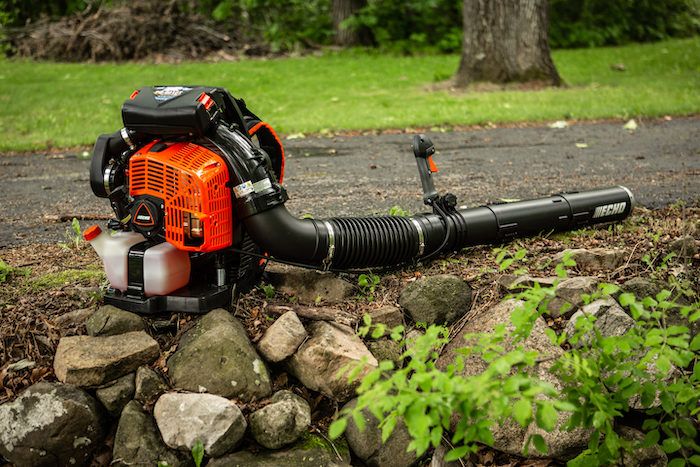For homeowners with extensive properties and landscaping professionals, the ability of a backpack leaf blower to operate continuously for long periods without interruption is just as crucial as its raw power. Frequent refueling or battery swaps can significantly slow down cleanup tasks and reduce overall productivity. This article will delve into the factors that determine a backpack leaf blower’s runtime and highlight strategies and models designed to offer the longest possible operational periods.
Why Long Runtime Matters
Long runtime is a critical feature for several reasons:
- Increased Productivity: Fewer interruptions for refueling or recharging mean more time spent actively clearing debris, leading to faster completion of large jobs.
- Efficiency for Large Properties: For properties spanning acres, a blower that can work for extended periods is essential to cover the entire area without constant stops.
- Convenience: Avoiding frequent trips to the fuel can or charging station makes the cleanup process smoother and less cumbersome.
- Professional Demand: Landscapers often work on multiple properties or tackle very large projects, where a blower with excellent runtime is a non-negotiable requirement.
Factors Influencing Runtime
The runtime of a backpack leaf blower is primarily determined by its power source and how efficiently it utilizes that power.
For Gas-Powered Backpack Leaf Blowers
- Fuel Tank Capacity: This is the most direct factor. A larger fuel tank allows the blower to hold more gasoline, extending the time it can operate before needing a refill. Commercial-grade gas blowers often feature larger tanks than residential models.
- Engine Efficiency: More efficient engines (often measured by their cubic centimeter, or cc, displacement relative to power output) consume less fuel for the same amount of work, thus extending runtime. Modern engine technologies, like Husqvarna’s X-Torq or Stihl’s 4-MIX, are designed for better fuel economy.
- Operating Throttle: Running a gas blower at full throttle constantly will deplete the fuel much faster than operating it at a lower, more controlled speed. Utilizing variable speed control can significantly extend runtime.
For Battery-Powered Backpack Leaf Blowers
- Battery Voltage (V) and Amp-Hours (Ah): These two metrics are crucial for battery runtime.
- Voltage (V): Higher voltage (e.g., 80V vs. 40V) generally indicates more power, but Amp-hours are more directly related to capacity.
- Amp-Hours (Ah): A higher Amp-hour rating (e.g., 5.0 Ah vs. 2.5 Ah) means the battery can store more energy, directly translating to longer runtime.
- Number of Batteries: Many high-performance battery backpack blowers are designed to accept two batteries simultaneously, effectively doubling the runtime.
- Motor Efficiency (Brushless Motors): Brushless motors are more efficient than brushed motors, drawing less power from the battery to achieve the same output, thereby extending runtime.
- Operating Mode/Throttle: Similar to gas blowers, running a battery blower on its “turbo” or highest setting will drain the battery much faster than using it on a lower, more efficient speed. Variable speed control is key for maximizing battery life.
- Charger Speed: While not directly affecting runtime during operation, a fast charger allows for quicker turnaround times if you need to swap out depleted batteries.
Maximizing Runtime
Regardless of your blower’s power source, you can employ strategies to get the most out of each tank or charge:
- Match Power to Task: Use only the necessary power for the job. Don’t run at full throttle if a lower setting can effectively move the debris. Variable speed control is invaluable here.
- Pre-Clear Heavy Debris: For extremely heavy or wet piles, consider using a rake or shovel to break them up before bringing in the blower.
- Efficient Blowing Technique: Work systematically, moving debris in one direction towards a collection point, rather than scattering it aimlessly.
- Maintain Your Blower: A well-maintained gas engine (clean air filter, fresh spark plug) runs more efficiently. For battery blowers, proper battery care (storing at optimal charge, avoiding extreme temperatures) extends battery lifespan and performance.
Conclusion
For serious yard work and professional applications, a backpack leaf blower with excellent runtime is a game-changer. Gas models typically offer the longest continuous operation due to larger fuel tanks and inherent power, while advanced battery systems are rapidly catching up, providing impressive runtimes with the added benefits of quiet, emission-free operation. By understanding the factors that influence runtime and adopting efficient operating practices, you can ensure your backpack leaf blower is ready to tackle even the most extensive cleanup tasks without missing a beat.


